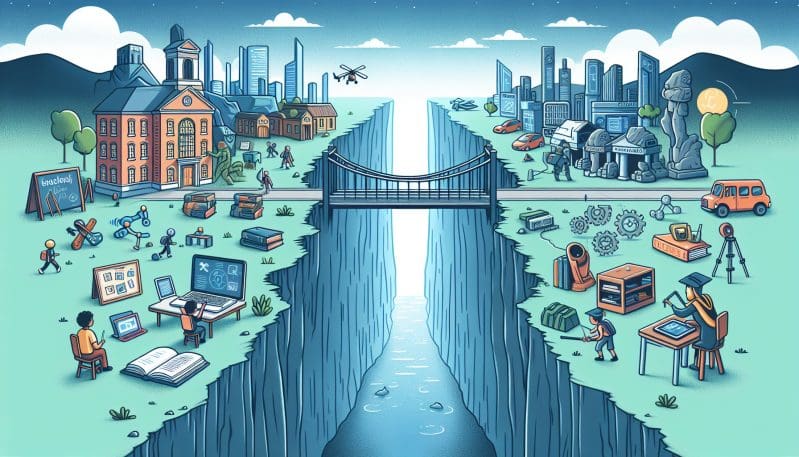The Great Skills Chasm: Bridging the Gap Between Current Education and the Future of Work
- Home
- The Great Skills Chasm: Bridging the Gap Between Current Education and the Future of Work
- Editors Desk
- March 14, 2024
- 0 Comments
In a world of rapid technological advancements and shifting economic landscapes, the divide between the skills imparted by traditional educational systems and the ever-evolving requirements of the modern workforce has never been more palpable. This dissonance, commonly referred to as the Great Skills Chasm, poses a daunting challenge for the youth and student population, who stand on the threshold of a job market that may deem their hard-earned qualifications insufficient.
As we dissect this predicament, it becomes clear that the educational curriculum of yesteryears, with its focus on rote learning and standardized testing, fails to equip students with the critical thinking, digital fluency, and adaptability that today’s – and more importantly, tomorrow’s – jobs demand. The world has transitioned to an innovation-driven economy, yet our schools and universities often remain bastions of outdated practices and knowledge.
The impact of this gap is far-reaching, with young professionals facing the stark reality of skill obsolescence even before their careers take off. Amidst waves of automation and artificial intelligence, roles that were considered stable are now at risk, while new categories of jobs are arising – ones that require a very different set of skills.
The good news is that the gap can be bridged. Upskilling and reskilling initiatives have emerged as vital lifelines for those in the workforce striving to stay relevant. By embracing continuous learning and seeking out skill development opportunities, individuals can pivot and adapt to new roles. Moreover, businesses and educational institutions must collaborate to ensure that the training provided is in line with the actual needs of the modern workplace.
Innovation in education is key. Project-based learning, interdisciplinary courses, and integration of technology can provide a more realistic and engaging learning experience. Additionally, mentorship programs and partnerships between industry leaders and educational establishments can offer real-world insights and hands-on training that purely academic settings cannot.
However, it is not just the responsibility of educators and employers to bridge this chasm. Policymakers must also play a critical role, enacting forward-thinking policies that incentivize lifelong learning and support the transition of workers into futureproof careers. Failure to act could result in a workforce ill-prepared for the future, with economic and social repercussions that could hinder progress for generations to come.
As we stand on the precipice of this Great Skills Chasm, it behooves all stakeholders – educators, employers, policymakers, and the youth themselves – to work in unison towards a cohesive strategy that not only prepares individuals for the jobs of tomorrow but also fosters an ecosystem of innovation and resilience. The consequences of inaction are stark, but the opportunities afforded by proactive and collaborative response are boundless.
In conclusion, the bridge over the Great Skills Chasm is built on the pillars of adaptive education, continuous upskilling, collaborative industry-academia partnerships, and robust policy frameworks. As a society, we must challenge the status quo and embrace these changes, for in the synergy of education and employment lies the foundation for a thriving and inclusive future workforce.

